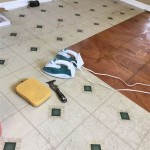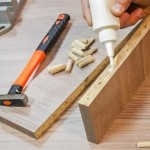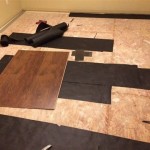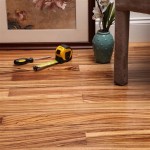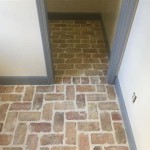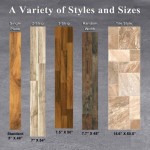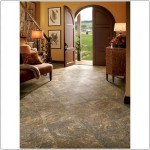Can You Put Vinyl Plank Flooring On The Wall Of A Bathroom?
Vinyl plank flooring has become a popular choice for bathroom floors due to its water resistance and durability. However, its use on bathroom walls is a less explored territory. This article delves into the feasibility and considerations of installing vinyl plank flooring on bathroom walls.
Moisture and Humidity Concerns
Bathrooms are inherently moist environments. Steam from showers and baths creates high humidity levels, which can impact wall materials. While vinyl plank flooring is generally water-resistant, its performance on walls differs from its performance on floors. On floors, the planks are interlocked and adhered to a subfloor, creating a relatively sealed surface. On walls, the installation process is different, and the potential for moisture penetration behind the planks is higher. Proper sealing and waterproofing are crucial to prevent moisture damage and mold growth.
The type of vinyl plank flooring also matters. Solid core vinyl planks generally offer better moisture resistance than composite core planks. Always check the manufacturer's specifications and recommendations regarding moisture exposure and suitable applications for the specific product. Some manufacturers explicitly advise against using their flooring products on walls, particularly in wet areas like shower surrounds.
Installation Methods and Challenges
Installing vinyl plank flooring on walls presents unique challenges. Unlike floors, walls are vertical surfaces, requiring different adhesive and support mechanisms. Traditional flooring adhesive may not be suitable for wall applications. Consider using a high-quality construction adhesive specifically designed for vertical surfaces and the weight of the planks.
Another challenge is ensuring a level and even surface. Walls often have imperfections that can impact the final look of the vinyl plank installation. Proper surface preparation, including patching and leveling, is essential. Furthermore, the planks themselves need to be cut accurately to fit around corners, fixtures, and other wall elements.
The interlocking mechanism of vinyl plank flooring, while advantageous on floors, can be problematic on walls. The weight of the planks can put stress on the interlocking system, potentially causing gaps or separation over time. Reinforcement with additional adhesive or mechanical fasteners might be necessary, particularly for larger planks or in areas subject to temperature fluctuations.
Wall Preparation and Substrates
The existing wall surface plays a significant role in the success of the vinyl plank installation. The substrate must be clean, dry, and structurally sound. Remove any existing wallpaper, loose paint, or other debris. Repair any damage to the wall, ensuring a smooth and stable surface.
Different wall substrates require different preparation methods. Drywall is a common substrate, but it requires proper sealing to prevent moisture absorption. A moisture barrier or waterproof membrane should be applied before installing the vinyl planks. Cement board is another option, offering better moisture resistance than drywall. However, it requires specialized fasteners and may necessitate different adhesive types.
Proper wall preparation also involves considering the existing plumbing and electrical fixtures. Ensure that the vinyl plank installation will not interfere with these elements. Plan the layout carefully to minimize the need for complex cuts and adjustments around pipes, outlets, and light switches.
Aesthetics and Design
While practicality is a primary concern in bathrooms, aesthetics also play a vital role. Vinyl plank flooring comes in various styles and colors, mimicking the appearance of natural wood or stone. This versatility allows for design flexibility and can enhance the bathroom's overall aesthetic appeal.
Consider the size and shape of the bathroom when choosing the plank size and color. Larger planks can make a small bathroom feel more spacious, while smaller planks can add visual interest to a larger bathroom. The color and texture of the planks should complement the existing bathroom fixtures and décor.
Using vinyl plank flooring on bathroom walls can create a cohesive and stylish look, especially when the same flooring is used on the floor. However, it's essential to weigh the benefits and challenges carefully. Proper installation and preparation are crucial to ensuring the longevity and performance of the vinyl planks in a bathroom environment.

How To Install Vinyl Plank Flooring In A Bathroom Fixthisbuildthat

Dos And Don Ts For Installing Vinyl Plank Floors In The Bathroom Advice Homeowners

How To Install Vinyl Plank Flooring On Walls Europine

How To Install Vinyl Plank Tiles In A Bathroom

Dos And Don Ts For Installing Vinyl Plank Floors In The Bathroom Advice Homeowners

Can I Install Vinyl Planks In Bathrooms Signature Flooring Floor Tiles

How To Install Vinyl Plank Flooring In A Bathroom Fixthisbuildthat

Dos And Don Ts For Installing Vinyl Plank Floors In The Bathroom Advice Homeowners

Can You Install Vinyl Flooring On Walls L Antic Colonial

How To Install Vinyl Plank Flooring In A Bathroom Fixthisbuildthat
See Also
